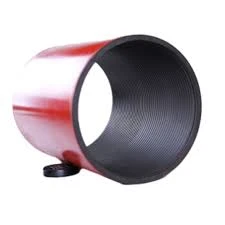- Afrikaans
- Albanian
- Amharic
- Arabic
- Armenian
- Azerbaijani
- Basque
- Belarusian
- Bengali
- Bosnian
- Bulgarian
- Catalan
- Cebuano
- Corsican
- Croatian
- Czech
- Danish
- Dutch
- English
- Esperanto
- Estonian
- Finnish
- French
- Frisian
- Galician
- Georgian
- German
- Greek
- Gujarati
- Haitian Creole
- hausa
- hawaiian
- Hebrew
- Hindi
- Miao
- Hungarian
- Icelandic
- igbo
- Indonesian
- irish
- Italian
- Japanese
- Javanese
- Kannada
- kazakh
- Khmer
- Rwandese
- Korean
- Kurdish
- Kyrgyz
- Lao
- Latin
- Latvian
- Lithuanian
- Luxembourgish
- Macedonian
- Malgashi
- Malay
- Malayalam
- Maltese
- Maori
- Marathi
- Mongolian
- Myanmar
- Nepali
- Norwegian
- Norwegian
- Occitan
- Pashto
- Persian
- Polish
- Portuguese
- Punjabi
- Romanian
- Russian
- Samoan
- Scottish Gaelic
- Serbian
- Sesotho
- Shona
- Sindhi
- Sinhala
- Slovak
- Slovenian
- Somali
- Spanish
- Sundanese
- Swahili
- Swedish
- Tagalog
- Tajik
- Tamil
- Tatar
- Telugu
- Thai
- Turkish
- Turkmen
- Ukrainian
- Urdu
- Uighur
- Uzbek
- Vietnamese
- Welsh
- Bantu
- Yiddish
- Yoruba
- Zulu
pup joint tubing
Understanding Pup Joint Tubing in Oil and Gas Operations
In the oil and gas industry, the efficiency and effectiveness of extraction operations hinge on the proper use of various components, one of which is pup joint tubing. This specialized equipment plays a critical role in ensuring optimal performance in wellbore operations. Understanding pup joint tubing, including its purpose, types, and applications, is essential for engineers and technicians working in this field.
Pup joints are short sections of tubing or pipe that are typically anywhere from 2 to 10 feet in length. They are primarily used to connect sections of drill pipe or tubing to provide a precise length of tubing required to offset the total depth of the well. The inclusion of pup joints within a system allows for greater flexibility and adaptability in various drilling and completion scenarios. Essentially, they help in modifying the length of the tubing string without necessitating the replacement of entire sections.
One of the key advantages of using pup joints is that they can be manufactured from the same material and specifications as standard tubing, ensuring compatibility across different components of the system. This homogeneity in material helps maintain structural integrity and performance under high-pressure conditions encountered during drilling and production. Additionally, pup joints can be customized to specific requirements, such as varying lengths, wall thicknesses, and coatings.
pup joint tubing

Pup joints are particularly useful in situations where precision is crucial. For instance, in vertical drilling operations, adjustments in length can be vital for achieving targeted depths or navigating around subsurface obstacles. They can also facilitate the completion of wells where space constraints exist or where additional tubing is needed to accommodate for downhole equipment, such as pumps or monitoring devices.
Another significant role of pup joint tubing is in the area of pressure management and control. Various operations within the oil and gas sector require precise pressure monitoring to maintain optimal performance and safety. By incorporating pup joints strategically in the tubing string, operators can effectively manage pressures and reduce the risk of well blowouts or equipment failures. This ability to regulate pressure is particularly essential during production and drilling phases, where fluctuations can lead to severe complications.
Moreover, the use of pup joints can contribute to enhanced safety protocols in oil and gas operations. By allowing for minor adjustments in the overall tubing system, they can help to minimize the time spent on rig adjustments, thus reducing the risks associated with working in high-pressure environments. Additionally, when repairs or replacements are necessary, pup joints can simplify the process, allowing for quicker interventions and reducing downtime.
In conclusion, pup joint tubing is an indispensable component in the oil and gas industry, contributing to both efficiency and safety in drilling and production processes. By understanding the functionality and applications of pup joints, industry professionals can better navigate the complexities of well operations, ensuring that the extraction of resources is conducted smoothly and effectively. As technology and techniques continue to evolve, the significance of such components will likely remain paramount, underscoring the importance of ongoing education and adaptation in this dynamic field. Whether it's maximizing production or enhancing safety measures, pup joint tubing stands out as a vital tool in the modern oil and gas landscape.
-
Tubing Pup Joints: Essential Components for Oil and Gas OperationsNewsJul.10,2025
-
Pup Joints: Essential Components for Reliable Drilling OperationsNewsJul.10,2025
-
Pipe Couplings: Connecting Your World EfficientlyNewsJul.10,2025
-
Mastering Oilfield Operations with Quality Tubing and CasingNewsJul.10,2025
-
High-Quality Casing Couplings for Every NeedNewsJul.10,2025
-
Boost Your Drilling Efficiency with Premium Crossover Tools & Seating NipplesNewsJul.10,2025







